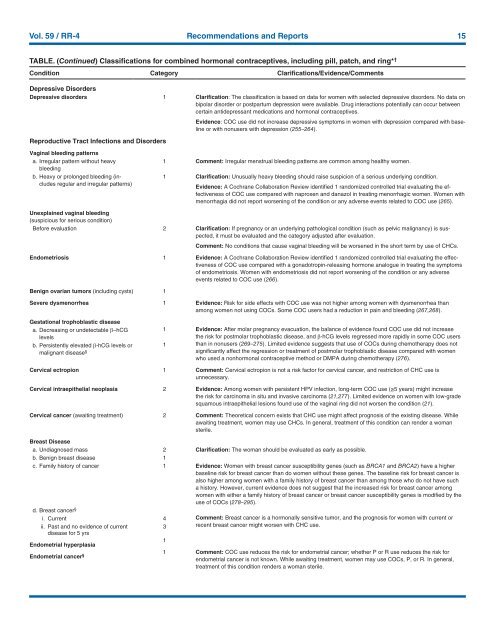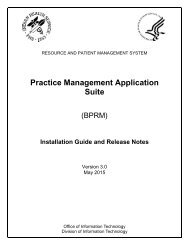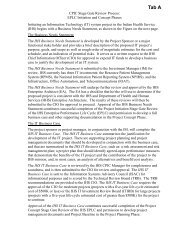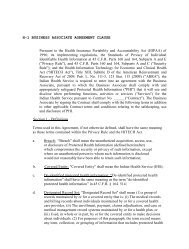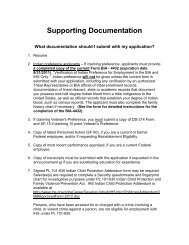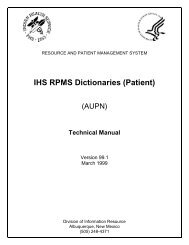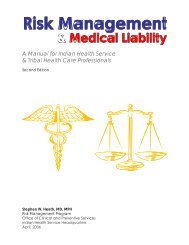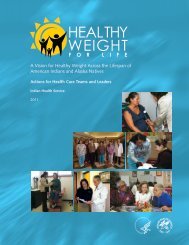CDC Article-US Medical Eligibility Criteria for Contraceptive Use, 2010
CDC Article-US Medical Eligibility Criteria for Contraceptive Use, 2010
CDC Article-US Medical Eligibility Criteria for Contraceptive Use, 2010
You also want an ePaper? Increase the reach of your titles
YUMPU automatically turns print PDFs into web optimized ePapers that Google loves.
Vol. 59 / RR-4 Recommendations and Reports 15<br />
TABLE. (Continued) Classifications <strong>for</strong> combined hormonal contraceptives, including pill, patch, and ring* †<br />
Condition Category Clarifications/Evidence/Comments<br />
Depressive Disorders<br />
Depressive disorders 1 Clarification: The classification is based on data <strong>for</strong> women with selected depressive disorders. No data on<br />
bipolar disorder or postpartum depression were available. Drug interactions potentially can occur between<br />
certain antidepressant medications and hormonal contraceptives.<br />
Evidence: COC use did not increase depressive symptoms in women with depression compared with baseline<br />
or with nonusers with depression (255–264).<br />
Reproductive Tract Infections and Disorders<br />
Vaginal bleeding patterns<br />
a. Irregular pattern without heavy<br />
bleeding<br />
b. Heavy or prolonged bleeding (includes<br />
regular and irregular patterns)<br />
1 Comment: Irregular menstrual bleeding patterns are common among healthy women.<br />
1 Clarification: Unusually heavy bleeding should raise suspicion of a serious underlying condition.<br />
Evidence: A Cochrane Collaboration Review identified 1 randomized controlled trial evaluating the effectiveness<br />
of COC use compared with naproxen and danazol in treating menorrhagic women. Women with<br />
menorrhagia did not report worsening of the condition or any adverse events related to COC use (265).<br />
Unexplained vaginal bleeding<br />
(suspicious <strong>for</strong> serious condition)<br />
Be<strong>for</strong>e evaluation 2 Clarification: If pregnancy or an underlying pathological condition (such as pelvic malignancy) is suspected,<br />
it must be evaluated and the category adjusted after evaluation.<br />
Comment: No conditions that cause vaginal bleeding will be worsened in the short term by use of CHCs.<br />
Endometriosis 1 Evidence: A Cochrane Collaboration Review identified 1 randomized controlled trial evaluating the effectiveness<br />
of COC use compared with a gonadotropin-releasing hormone analogue in treating the symptoms<br />
of endometriosis. Women with endometriosis did not report worsening of the condition or any adverse<br />
events related to COC use (266).<br />
Benign ovarian tumors (including cysts) 1<br />
Severe dysmenorrhea 1 Evidence: Risk <strong>for</strong> side effects with COC use was not higher among women with dysmenorrhea than<br />
among women not using COCs. Some COC users had a reduction in pain and bleeding (267,268).<br />
Gestational trophoblastic disease<br />
a. Decreasing or undetectable β–hCG<br />
levels<br />
b. Persistently elevated β-hCG levels or<br />
malignant disease § 1<br />
1 Evidence: After molar pregnancy evacuation, the balance of evidence found COC use did not increase<br />
the risk <strong>for</strong> postmolar trophoblastic disease, and b-hCG levels regressed more rapidly in some COC users<br />
than in nonusers (269–275). Limited evidence suggests that use of COCs during chemotherapy does not<br />
significantly affect the regression or treatment of postmolar trophoblastic disease compared with women<br />
who used a nonhormonal contraceptive method or DMPA during chemotherapy (276).<br />
Cervical ectropion 1 Comment: Cervical ectropion is not a risk factor <strong>for</strong> cervical cancer, and restriction of CHC use is<br />
unnecessary.<br />
Cervical intraepithelial neoplasia 2 Evidence: Among women with persistent HPV infection, long-term COC use (≥5 years) might increase<br />
the risk <strong>for</strong> carcinoma in situ and invasive carcinoma (21,277). Limited evidence on women with low-grade<br />
squamous intraepithelial lesions found use of the vaginal ring did not worsen the condition (21).<br />
Cervical cancer (awaiting treatment) 2 Comment: Theoretical concern exists that CHC use might affect prognosis of the existing disease. While<br />
awaiting treatment, women may use CHCs. In general, treatment of this condition can render a woman<br />
sterile.<br />
Breast Disease<br />
a. Undiagnosed mass 2 Clarification: The woman should be evaluated as early as possible.<br />
b. Benign breast disease 1<br />
c. Family history of cancer 1 Evidence: Women with breast cancer susceptibility genes (such as BRCA1 and BRCA2) have a higher<br />
baseline risk <strong>for</strong> breast cancer than do women without these genes. The baseline risk <strong>for</strong> breast cancer is<br />
also higher among women with a family history of breast cancer than among those who do not have such<br />
a history. However, current evidence does not suggest that the increased risk <strong>for</strong> breast cancer among<br />
women with either a family history of breast cancer or breast cancer susceptibility genes is modified by the<br />
use of COCs (278–295).<br />
i. Current 4<br />
Comment: Breast cancer is a hormonally sensitive tumor, and the prognosis <strong>for</strong> women with current or<br />
d. Breast cancer §<br />
ii. Past and no evidence of current<br />
3<br />
recent breast cancer might worsen with CHC use.<br />
disease <strong>for</strong> 5 yrs<br />
Endometrial hyperplasia<br />
1<br />
1 Comment: COC use reduces the risk <strong>for</strong> endometrial cancer; whether P or R use reduces the risk <strong>for</strong><br />
Endometrial cancer § endometrial cancer is not known. While awaiting treatment, women may use COCs, P, or R. In general,<br />
treatment of this condition renders a woman sterile.


